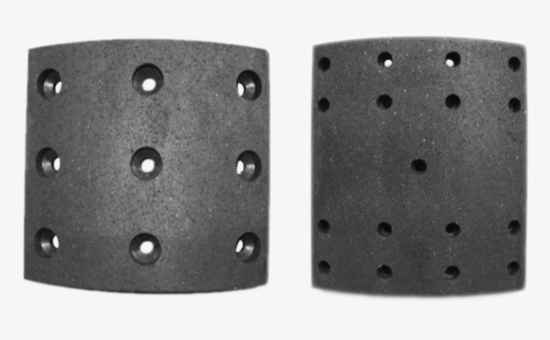
The brake pad is a typical friction material and is the most important safety component in the brake system of a car. The friction and heat resistance of raw materials are particularly high, especially for some high-speed vehicles. Following the basic elimination of asbestos brake pads, semi-metal brake pads, ceramic brake pads, and composite fiber brake pads emerge in an endless stream, in which composite fiber brake pads are added with appropriate amounts of nitrile rubber powder modification to better meet the car's performance requirements for brake pads. .
The base material of the composite fiber brake pad is a phenolic resin modified with nitrile rubber powder, which is processed by adding an appropriate amount of fiber, barium sulfate, and graphite. Among them, phenolic resin has a high friction coefficient and a very low wear rate, and is widely used in brake pads. However, the phenolic resin itself is hard and brittle, and the addition of nitrile rubber powder can just improve the phenolic resin defect, improve the friction performance, safety factor, and extend the service life of the composite fiber brake pad.
The raw material of nitrile reclaimed rubber powder is waste nitrile gloves. Its main components are acrylonitrile and butadiene. It has good heat resistance, cold resistance, solvent resistance, abrasion resistance, anti-slip performance, and compatibility with various polymers. Excellent. Nitrile rubber powder can be used as a stress concentration body in the phenolic resin to induce matrix silvering and shear yielding, and the phenolic resin undergoes brittle-ductile transformation, thereby increasing the toughness of the brake pad and increasing the impact strength of the composite fiber brake pad; After the modification of the rubber powder, the rigidity and the toughness of the phenolic resin are increased, and the temperature of the friction surface of the brake pad will be reduced, so that the use temperature of the composite fiber brake pad can be relatively increased. This is in contrast to the nitrile rubber powder itself. The good heat resistance is also inseparable; the nitrile rubber powder has a small permanent deformation and can be added to the composite fiber brake pad for a long time to maintain the original material properties.
High-temperature, low-temperature, abrasion-resistant, oil-resistant, tear-resistant, non-slip, flex-resistance, and elongation at break of composite fiber brake pads produced by using phenolic resin modified with nitrile rubber powder as the substrate have been significantly improved. , In order to improve the wear resistance and safety of composite fiber brake pads. However, if the amount of nitrile rubber powder in the composite fiber brake pad is too high, the effect of decomposing small molecules at high temperatures will increase, which will affect the wear resistance and loss of the brake pads. Therefore, the amount of nitrile rubber powder should be controlled in the phenolic About 10% of the resin.
In fact, the properties of composite fiber brake pads produced with phenolic resin as matrix, fiber as reinforcement, and graphite as filler are not only related to whether or not nitrile rubber powder is added, but also the type and amount of fiber used (mostly carbon fiber). Great relations, we will not elaborate one by one. It is undeniable that the nitrile rubber powder plays an important role in the modification of composite brake pads.
Exclusive original article [commercial authorization] reprint, excerpt and excerpt in any form are prohibited without written authorization. Focus on Hongyun rubber: learn the process formula and raw material technology of producing rubber products from recycled rubber to help you reduce costs and increase profits